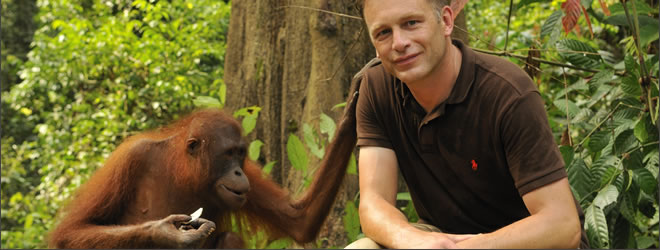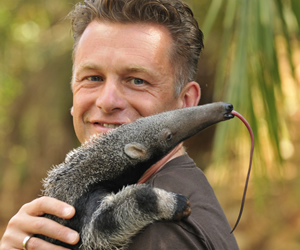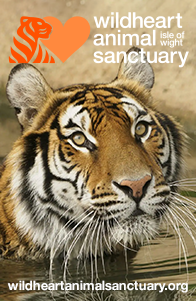Waterworlds
Episode 4 Secrets of our Living Planet
BBC Two 7pm Sunday 22 July 2012
In the final part of the series, Chris makes an epic journey, from the mountain streams of Iceland to the deep of the Indian Ocean, via the wetlands of the Pantanal in Brazil and the coastal swamps of Bangladesh. And on the way, he reveals how our most important ecosystems, overcome the daily challenge of living in medium that is constantly on the move.
He shows us how the Pantanal wetland in Brazil, while being a land of the giants (the world’s biggest snake, water lily, rodent, otter – you name it, they all live here), actually couldn’t work without the humble apple snail. Thanks to this animal, the Pantanal is able to recycle nutrients and regenerate itself in all its amazing glory, every year.
Chris then travels to the Sunderbans – a vast mangrove swamp at the mouth of the Ganges. After the Pantanal, it seems amazing that anything at all can live in what appears to be a sticky, sulphurous ooze. But, in fact, there is so much life here that this place supports a quarter of the world’s tiger population. Once again, it’s all down to a group of unsung heroes – the crabs on the beach. These animals dig burrows that not only supply oxygen and food to the roots of the mangroves; they also mix the toxic seawater with freshwater so that these trees can thrive.
Chris then heads out to sea, to the coral reefs of the Maldives. Here he investigates the puzzle of where reefs get their food. After all, their waters are crystal clear, so where are the nutrients? The answer comes in the very unlikely form of one of the weirdest animals on the planet. Sponges have no eyes or nervous system and can’t move. But what’s really weird is the way they eat their food. They pump seawater through their bodies at such a high rate that they are able to harvest enough nutrients, from the microscopic particles in the water. And, thanks to the sponges capturing these nutrients, the whole reef can thrive.
Chris then sails out into the deep ocean to reveal how ocean currents rescue much of the lost nutrients that end up on the seabed. These feed plankton blooms that attract our planets largest animals and –astonishingly – even influence the weather.
My earliest memories are of discovering beauty in small things. The Ladybird that tickled my palm and pitched on the tip of my finger was formatively perfect. I still see and feel this about living things, and revel in it, but I have also recognised that a far greater, far richer beauty exists in the dynamic harmony of complex communities of life. This co-existence of all the little things defines the science of ecology and my ambition for Secrets of our Living Planet was to not only explain this but also to reveal to each viewer how astonishingly beautiful the result is.
Having watched Secrets of our Living Planet I want people to shift their appreciation of life up a gear, to reach another plane in terms of understanding its complexity, its fragility and its almost unbelievable beauty.
Many people like animals: some love them, some obsess about them. But generally, in isolation, they like tigers or otters or snails. What I want is to join everything up, to show that – as incredible as it may sound – there are real connections between these and, indeed, all things; and that without these relationships none could survive.
Understanding nature is not about knowing why birds sing, why bees buzz or why fish swirl in silvery shoals. It’s about being able to see the bigger picture, being able to see how all life is connected and, by unravelling the stories that link species, it’s also about developing a deeper more profound appreciation of life.
For me Secrets of our Living Planet has been a chance to tell the greatest story ever told. To romp through some of the most amazing sub-plots and lead the viewers toward an awesome epiphany, to really explain how nature works. I want them to go ‘Aww’, go ‘Wow’, I want them to shed tears at the sheer beauty of it all.
Main image: Presenter Chris Packham and Orang-utan. Borneo, Malaysia. Photographer: Adam White.
Copyright: Adam White. Used with the kind permission of the BBC.
Top right image: Presenter Chris Packham with a baby giant anteater. Brazil. Photographer: Adam White.
Copyright: Adam White. Used with the kind permission of the BBC.







